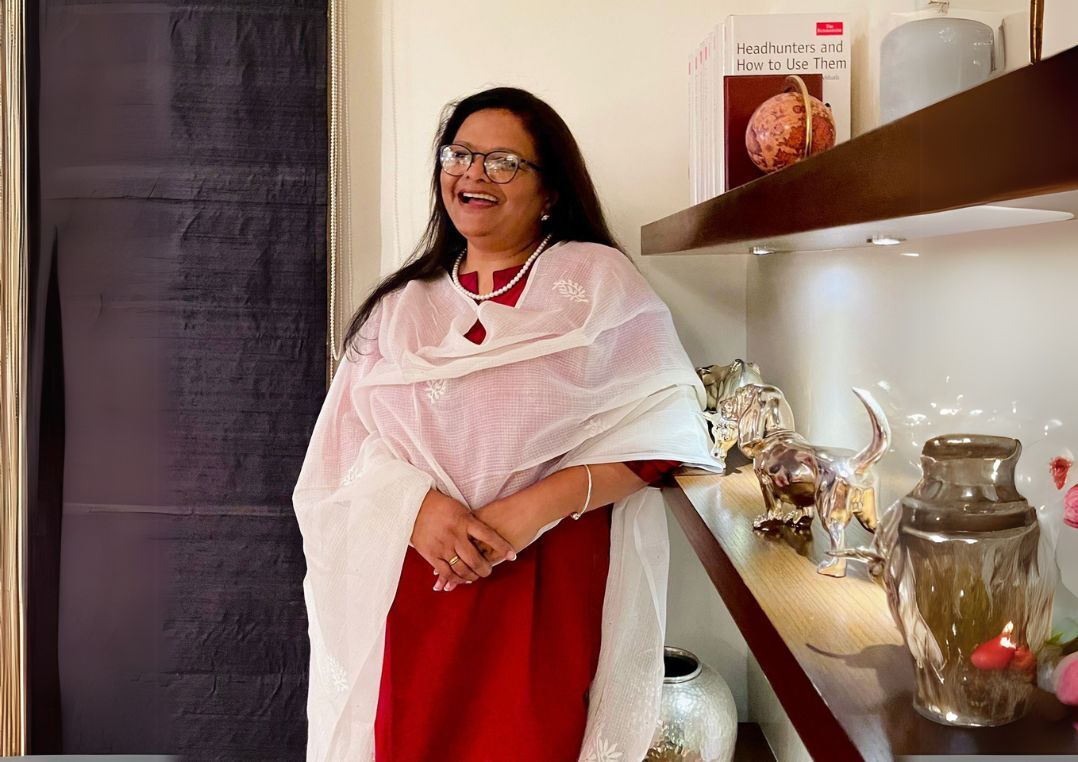Rooted in
Knowledge, Raised to Dream
I was born in Ujjain, Madhya
Pradesh—a town rich with history, home to the Mahakaleshwar Jyotirlinga, King
Vikramaditya’s legends, and Krishna’s childhood stories. Back then, it was a
quiet university town where education and small government jobs were the main
sources of livelihood.
I was lucky to grow up in a family
that valued learning. My father was a chemistry professor, and my mother, even
at 83, remains a strong and active history professor. My brother served as a
decorated officer in the Indian Navy before retiring. In our home, education
was never optional—it was expected. Naturally, I pursued higher studies, earning
a PhD in medicinal chemistry from Vikram University, Ujjain. My research
focused on extracting medicinal compounds from plants, particularly for
treating parasitic infections. But I knew I wanted more.
A
Scientist Finds Her Path
During my PhD, life took a tough
turn. My father fell gravely ill. In the 1980s, cancer was poorly understood,
and doctors struggled to diagnose him. With my brother away, I stayed to
support my mother. Around the same time, I entered a research competition by
the Madhya Pradesh Council of Science and Technology—without expecting much. To
my surprise, I won the Best Scientist Award.
That award changed everything. It
came with a rare opportunity—three months of fully funded research at any CSIR
lab in India. I chose NCL Pune. What was supposed to be a short stint turned
into a year and a half of postdoctoral research. It was here that I saw the
scale of global research, how innovation was nurtured, and how ideas turned
into impact.
Marriage,
Canada, and a New Perspective
Like in many Indian families, my
career decisions were soon intertwined with marriage. After getting married, I
moved to Mysore, where my in-laws—both scientists—encouraged me to continue
research. I took up another postdoc at IISc Bangalore. Eventually, life took us
to Canada, where I worked as a scientist at Naeja Pharmaceuticals, contributing
to Pfizer projects. We were financially stable, living the classic young
professional dream.
But stability alone didn’t excite
me. I wanted to bridge the gap between science and business. So, I pursued an
MBA at the University of Alberta, specializing in Technology Commercialization.
The Business School Dean questioned why a PhD holder needed an MBA. It took me
three hours to convince him. I completed the program at record speed.
The
Leap into Entrepreneurship
In 2009, my husband’s father was
diagnosed with Parkinson’s. His mother needed help. Sitting in Canada worrying
wasn’t an option, so I moved back to India. Instead of taking another corporate
job, I took the biggest risk of my life—I started my own company.
At first, I played it safe with
consultancy, bringing pharmaceutical projects from North America to India. It
was profitable, but one incident changed my perspective. I lost a crucial
contract over a mere $125 shipping cost difference. That’s when I
realized—services make you start over with every project, but products create
lasting impact.
A mentor asked me, “What excites
you?” Without hesitation, I replied, “If someone buys a product I
created, I’ll be happy.” And that was my turning point.
Revolutionizing
Probiotics
In 2011, I turned to probiotics. It
was an emerging field, but with a major problem—probiotics required
refrigeration, making them difficult to market in India’s climate. I was
determined to solve this.
Funding was the first hurdle. I
applied for a collateral-free loan for women entrepreneurs, but the bank
manager laughed me out of his office. I didn’t back down. Every 10 days, I went
back. They avoided me, made excuses—but I kept showing up. Eventually, they approved
my loan, and I built my first microbiology lab.
Between 2011 and 2016, we worked
relentlessly. Then, a breakthrough—our team stabilized probiotic bacteria at
over 200°C without genetic modification. A mentor urged me to patent it
immediately. We secured patents in the U.S., Canada, 11 European countries, and
India. Funding followed—angel investors, Series A funding—then COVID-19 hit,
halting our nearly completed manufacturing plant. But I refused to let 15 years
of work slip away.
Making
Probiotics Accessible
By 2022, I was ready for my next
challenge. I joined AA Probiotics, focusing on making probiotics available in
gummy form—something simple, stable, and accessible. Most probiotics in India
were sold as capsules or powders that needed refrigeration. We changed that.
As I entered the consumer market, I
saw an even bigger gap—women’s health, particularly for menopausal women, was
being ignored. The nutraceutical space was flooded with weight loss and
immunity-boosting products, but little was designed for real women’s needs. I
wanted to change that.
Selling science to scientists had
been easy. Selling wellness to everyday consumers was a different challenge.
Initially, sales came through WhatsApp and Instagram. Some bought out of
curiosity, others to support me. But when they experienced real benefits, they
returned. Within months, retention rates hit 20%, and sales grew steadily.
Pushing
the Boundaries of Science
By 2024, Probiota Innovations was
launched to take probiotic research
further. We weren’t just making products; we were pushing scientific
frontiers—developing probiotic solutions for autism by targeting the gut-brain
axis, exploring microbiomes for skin health, creating probiotics for poultry
and aquaculture, and formulating advanced gut health solutions with probiotics,
prebiotics, and postbiotics.
My vision is simple—if probiotic research happens anywhere in the world, I want to be part of it. Science shouldn’t be locked in labs and patents. It should reach people. It should change lives.
The Journey Continues
“Do not go where the path may lead, go instead where there is no path and leave a trail.” — Ralph Waldo Emerson
Looking back, my story isn’t just about science, business, or patents. It’s about perseverance—returning to the bank 20 times until they finally listened, refusing to let an investor decide my fate, and proving that a middle-class woman from Ujjain could reshape global nutrition science.
I don’t know how to sit still. And I never will. Because there’s always another problem to solve.

